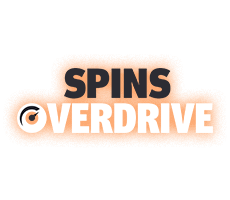How to play
6-Max poker: improve your strategy for six-handed games
Six-handed games can be quite intense. The lack of opponents coupled with the fact you pay the blinds more frequently results in an action-packed game where the better players are aggressive. Those above factors mean getting your starting hand selection spot on is crucial to your success at the six-max tables. This article will help you do precisely that.
Before we look at the various starting hand ranges for six-max no-limit Hold'em cash games, we must make one thing abundantly clear: you should hardly ever limp into a pot unless you are in the small blind. If a hand is good enough for you to open the betting action, it is good enough to open with a raise. The small blind is a different beast that we'll touch on later.
For the purposes of this article and the starting hand ranges you will read about, we are making a few assumptions about your typical six-max NLHE poker table. First, all the players have full stacks of 100 big blinds. Second, your opponents are all playing normally, meaning none are too tight or overly aggressive.
Playing under the gun
Under the gun refers to the first seat to the direct left of the big blind. This early position is called such because you are forced to act first in the preflop betting round, almost like someone has a gun held to you! Early position is always a challenge due to being first to act, so our starting hand range should be stronger than elsewhere at the table.
You can safely open-raise with: 22+, 65s+, J9s+, Q9s+, K9s+, A2s+, KQo+, AJo+
The above means open with a raise with any pocket pair, six-five suited or better, jack-nine suited or better, queen-nine suited or better, king-nine suited or better, all suited aces, king-queen offsuit or better, and ace-jack off suit or better.
The hands at the bottom of your range, like six-five suited, can be tricky to play if you are not used to playing from early position, but having a range this wide will help you get paid off with your stronger hands. You may want to tighten your early position range at a more aggressive table, and tighten it at a loose table. Not how hardly any offsuit hands you should open with from early position.
Middle position
Some people call middle position at a six-handed table the hijack. You still don't have a great position at the table when in the hijack, so it should be unsurprising to discover your opening range is similar to under the gun.
22+, 54s+, 97s+, J9s+, Q9s+, K8s+, A2s+, QJo+, KJo+, ATo+
Again, not the lack of unsuited hands.
The Cutoff
The Cutoff is the seat before the button, and where we can start applying our positional advantage at the table. We are now raising a wider range of starting hands because our positional advantage overcomes the weakness of some of our holdings. This is a solid cutoff opening range:
22+, 54s+, 64s+, J8s+, Q8s+, K6s+, A2s+, JTo+, QTo+, KTo+, ATo+
If you are particularly skilled or the players left to act are tight, you can consider opening with hands as weak as queen-four suited and king-deuce suited, ten-nine offsuit, or ace-eight offsuit.
The Button
Having the button is when the shackles well and truly come off, and where almost any hand is playable under the correct circumstances. You will make most of your profit from the button when opening for a raise because you only have the blinds to beat, and you have position on them if they do call.
Your button range should look something like this:
22+, 32s+, 53s+, 63s+, 84s+, 95s+, T6s+, J6s+, Q4s+, K2s+, A2s+, 98o+, J9o+, Q9o+, K9o+, A2o+
You may find that some savvy opponents will begin three-betting you from the blinds when they realize you are opening such a wide range from the button. Depending on their post-flop tendencies, you may want to call and have position over them, fold the weaker parts of your range or four-bet bluff them.
From the Small Blind
Older poker strategy always said to play tightly from the blinds, but that information is long out of date. Your opening range when first to act in the small blind is potentially wider than on the button. Why? Because you only have the big blind to beat, and there are already 1.5 big blinds in the pot waiting to be one. You can almost raise any two hands against an overly tight big blind. Conversely, limping with a wide range is also fine ass it only costs you 0.5 big blinds to call, although expect the big blind to raise you a lot if you limp.
A small blind raising range against a typical opponent looks like: 22+, 32s+, 53s+, 63s+, 84s+, 95s+, T6s+, J6s+, Q4s+, K2s+, A2s+, 98o+, J9o+, Q9o+, K9o+, A2o+
Practice with the help of our poker coach, Whizz, and improve your game!
Create Account
